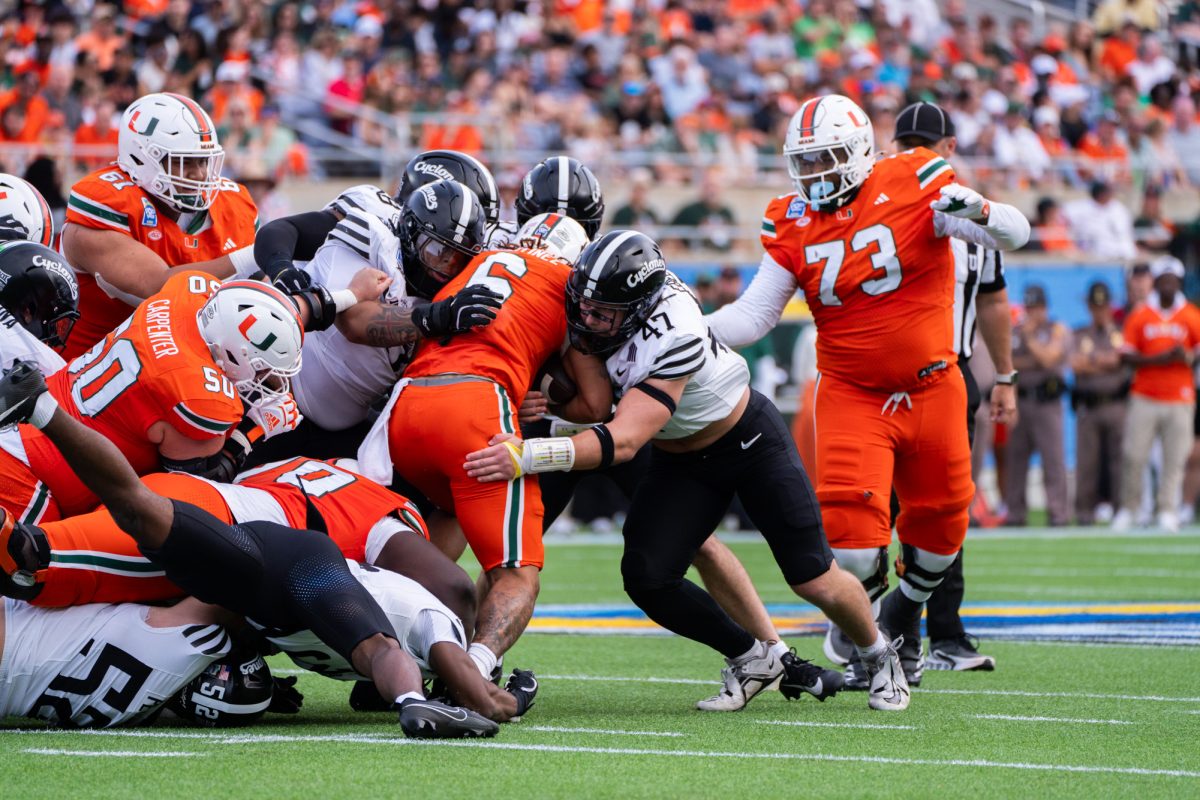Gene therapy on rats could possibly lead to ‘superathletes’
March 3, 2004
A muscle-growing drug designed to fight muscle-wasting illness may have implications for athletic departments across the country if it is made available in the medicinal market.
There is concern among American sports officials that the new drug, a gene for insulin-like growth factor-1 (IGF-1) — originally designed to help people with muscle-wasting illnesses such as AIDS or muscular dystrophy — could be used illegally to build “superathletes.”
The drug is virtually undetectable and could make users’ muscles larger and stronger without much effort.
The drug is being tested at the University of Pennsylvania, where trials showed a 15 to 30 percent increase in the mass, strength and endurance of the muscles of lab rats after they were injected with a gene-manipulated virus.
Officials in the ISU athletic department said they had not heard about this study and were surprised to hear what it could do. They said they were concerned that, if the drug does work on humans the way it is supposed to, it could have damaging physical side effects on anybody who takes it for performance-enhancing purposes.
“Everyone in athletics, period, would be concerned,” said Mark Coberley, head football athletic trainer.
“To level playing fields, you would like people to perform with their own natural abilities. That’s why they have drug testing.”
The NCAA has strict regulations against the usage of performance-enhancing drugs and gene therapy.
“It’s very closely monitored anymore, with drug testing by the NCAA and our own drug tests,” said Terry Allen, associate head football coach. “[The NCAA] can come in at any time, at least three times a year.”
Allen said members of Iowa State and the Big 12 Conference conduct additional random drug tests on student-athletes throughout the year.
Coberley said if the gene therapy is released for human usage, it will not go unnoticed.
“I’m sure that the appropriate governing bodies will take whatever action is necessary, if needed,” Coberley said.
Marc Shulman, team physician at the Thielen Student Health Center, said there may not be cause to worry because results in lab rats may differ from results in humans.
“It takes a lot of research to see if it works the same in humans as it does in lab animals,” Shulman said.
Douglas King, professor of health and human performance, agrees.
“In terms of some aspects of physiology, there are some differences in rats and humans,” King said. “The bodies may not deal with it in the same way.”
Although there is concern physical damages could occur from using this muscle-building gene therapy, good results are possible for those who need to take it.
“There are a lot of good things that come from gene therapy,” Shulman said.
“It has to be in the right patients at the right time for the right reasons.”
He said a good example of the appropriate use for this type of gene therapy would be in patients with muscular dystrophy, who experience significant loss of muscle mass.
A bad use of such therapy would be for the purposes of enhancing physical performance.
“I don’t think athletes here would take the risk of losing their scholarships and the [possibility of experiencing the] unknown medical risk of these things,” Shulman said.
Coberley said he wasn’t aware of any abuse by ISU athletes.
Shulman said for now, he expects more concern for non-athletes who aren’t sanctioned by any organizations and would take gene therapy drugs to enhance their appearance. He said they could be at greater risk of physical harm due to side effects including liver damage, testicle and ovary changes and mental disorders.
— The Associated Press
contributed to this article.






